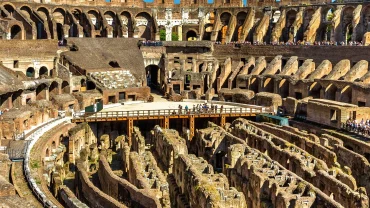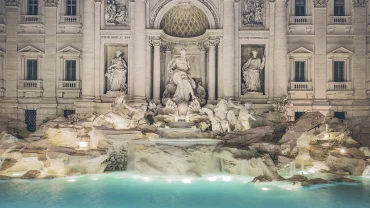includes existing and former buildings
1,400 years of active use
It is divided into three categories:
those ancient structures that can be seen today as ruins or reconstructions
ancient structures that have vanished or exist only as fragments;
churches of the later, Christian, era.
most part buried under debris Over the years, close to 20’ of dirt, river silt and ancient debris buried much of Fori.
the flooding of the Tiber and the erosion of the surrounding hills have been raising the level of the Forum floor for centuries.
originally a marketplace
was the center of day-to-day life
the site of triumphal processions
The site of election
venue for public speeches
criminal trials
gladiatorial matches;
the nucleus of commercial affairs.
statues and monuments commemorated the city’s great men.
The teeming heart of Ancient Rome
it has been called the most celebrated meeting place in the world
where the people of Rome could gather for commercial, political, judicial and religions.
attracting 4.5 million or more sightseers yearly.
most important structures of the ancient city were located on near the Forum
included the ancient former royal residence
This is where the Senate—as well as Republican government itself—began.
The Senate House, government offices, tribunals, temples, memorials and statues gradually cluttered the area.
focus of judicial
judicial business would transfer away from the Forum Romanum to the larger and more extravagant structures (Trajan’s Forum and the Basilica Ulpia) to the north.
as political speeches, civil trials, and other public affairs began to take up more and more space in the Forum
The reign of Constantine the Great saw the construction of the last major expansion of the Forum complex
the Basilica of Maxentius (312 AD). This returned the political center to the Forum until the fall of the Western Roman Empire almost two centuries laterally
According to tradition, the Forum’s beginnings are connected with the alliance between Romulus, the first king of Rome controlling the Palatine Hill, and his rival, Titus Tatius, who occupied the Capitoline Hill.
Rome’s second king, Numa Pompilius (r. 715–673 BC), is said to have begun the cult of Vesta, building its house and temple as well as the Regia as the city’s first royal palace.
Tullus Hostilius (r. 673–642 BC) enclosed the Comitium around the old Etruscan temple where the senate would meet at the site of the Sabine conflict. He is said to have converted that temple into the Curia Hostilia close to where the Senate originally
In 600 BC Tarquinius Priscus had the area paved for the first time




Comment (0)